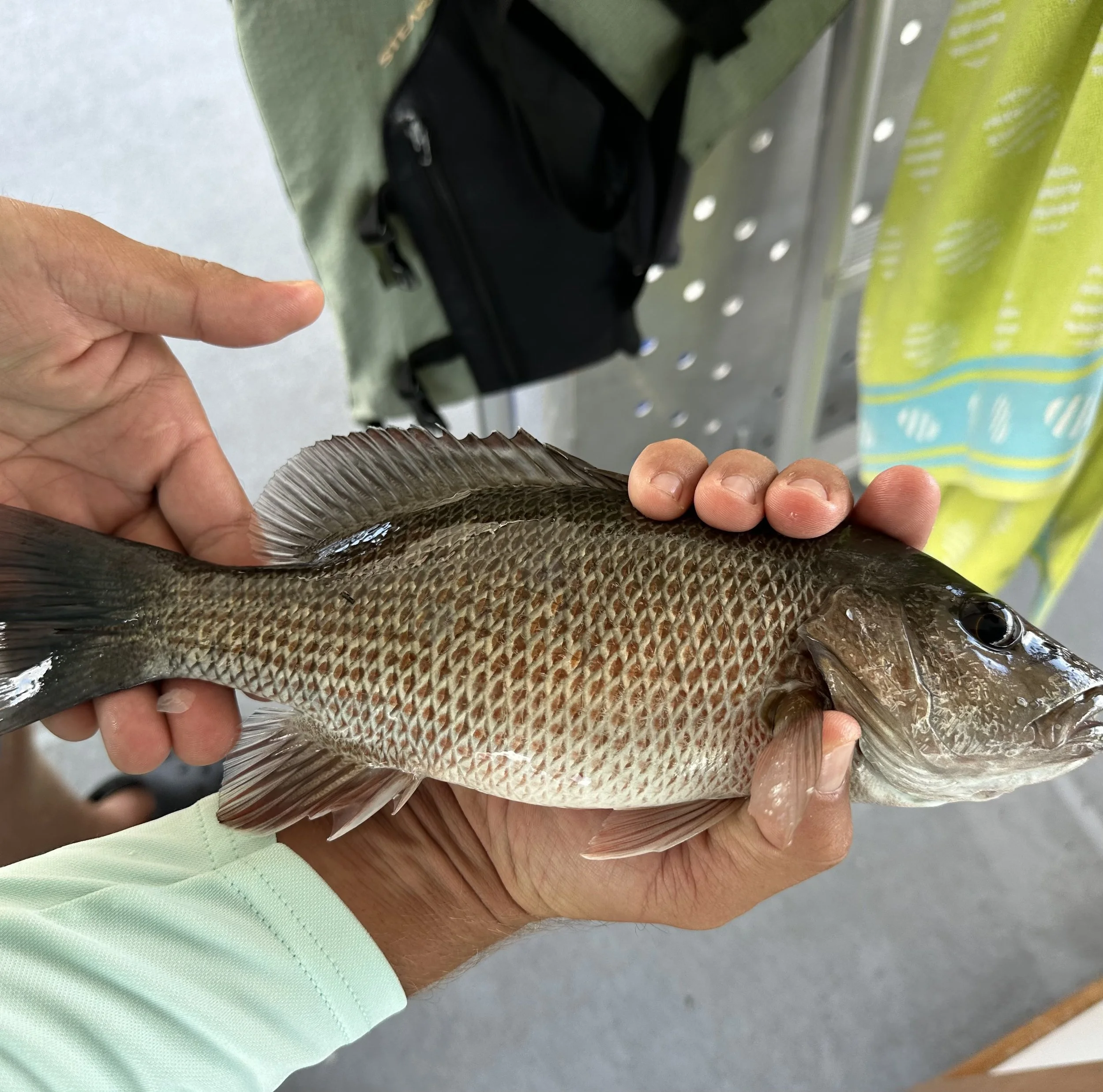Look Who’s Hanging Out in the Mangroves During a Full Moon: Mangrove Snapper
A mangrove snapper.
by Lucas Grahn
Hi, my name is Lucas Grahn and I’m an Eco Vessel Environmental Education Intern at the Tampa Bay Watch Discovery Center. The Eco Vessel takes visitors at the Discovery Center on Eco Tours of the Tampa Bay estuary to learn about the animals and marine life that make their home in and along the shores of Tampa Bay. The mangroves that line much of the shoreline of the Bay create a habitat for marine life, especially fish. Today I want to tell you about a fish that shares its name with the mangroves they call home – Mangrove Snapper.
Mangrove snapper are dark brown or gray in color with rows of red-orange spots in bars along their sides. Their dorsal fins are elongated with distinctive rays and a rounded tail. Mangrove snapper can also be identified by their significant sharp canine teeth. Here is an interesting fact about these fish that makes them unique in Tampa Bay - they spawn millions of eggs from June to September during full moons!
Mangrove snapper can be found in coastal waters near reefs, seagrass beds, and mangroves of course. They like to hang around structures like bridges, rocks, and docks where they can find food easily. I caught the Mangrove snapper in the photograph while fishing on the dock next to the Discovery Eco Vessel in June. Fishing for Mangrove snapper is fun in shallow water. They fight hard and make quick strikes at live or frozen shrimp bait and are easy to catch once you know where to look for them. These fish tend to stick together forming large schools, especially during the summer spawning season. Unlike a lot of fish species, when you catch one, there is usually more just waiting for you to try to reel them in. Mangrove snappers are great tasting fish, so they are in high demand during the summer fishing season.
If you have a chance, I invite you to join one of the Discovery Center’s Eco Vessel tours such as the Wildlife Boat Tour of the Bay so you can experience up close all that the Tampa Bay estuary has to offer and learn about how Tampa Bay Watch’s conservation efforts work to protect the Bay’s ecosystem and the mangroves and seagrasses so these fish can continue to thrive.

